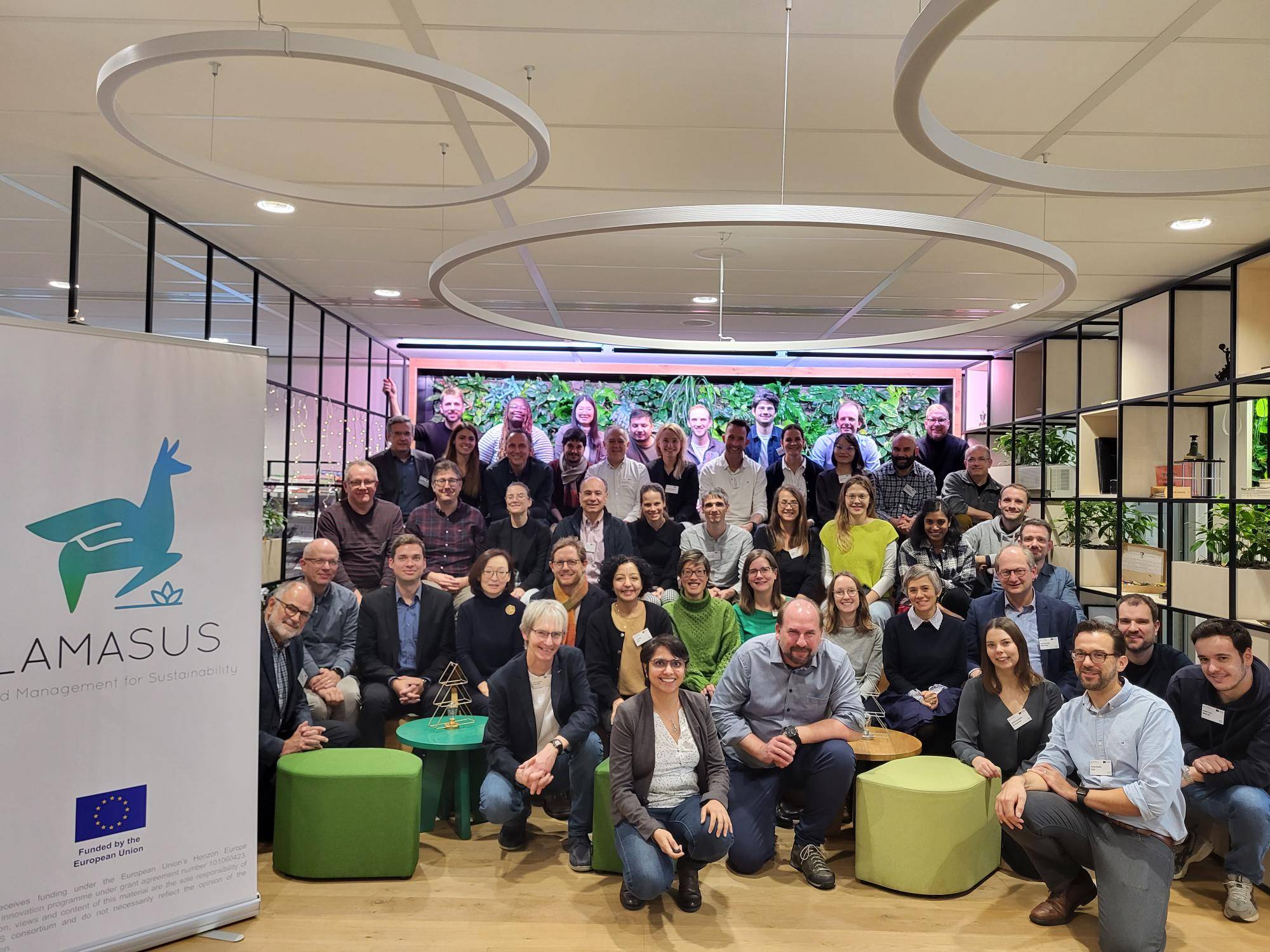The LAMASUS consortium met for a two day meeting on November 28-29, 2023 in The Hague, Netherlands.
The program was packed with talks about the exciting scientific progress the project is making, discussions on land use models, and plans for the future. There was also a meeting with the Policy Advisory Board.

Petr Havlík and Tamás Krisztin opened the LAMASUS Consortium meeting in The Hague, the Netherlands with an overview of major achievements during the first year and key next steps, including:
- Successful engagement of the Stakeholder Board: during the first workshop we solicited detailed feedback on the land use management geodatabase, agricultural and forest policy database, and key policies for the future of European land management. Agenda for the second workshop in March, 2024 will be further developed during the GA meeting.
- During a EAAE pre-congress workshop, baseline reporting gaps across the EU were identified and tools to explore the baseline discussed. Next steps to improve baseline alignment across model outputs are in progress.
- Developed components and functionality for the LAMASUS Portal and the architecture for the Accelerator were described.
Angela Guerino and Fanny LeGloux, EC Policy Officers reiterated the need for LAMASUS to be a catalyst for change by creating tools and easy to digest results to help policy makers make informed decisions. Five Policy Advisory Board members, Jurij Balkovic, Olaf Heidelbach, Alan Matthews, Tassos Haniotis, and Simon Kay, attended the meeting in person. During the PAB session, they expressed their impressions on the great progress and provided detailed feedback on the work to date.
The program covered dedicated sessions to describe the current state of the LAMASUS geodatabase. The geodatabase captures a consistent Corine annual time series from 2000 to 2018 and land use management layers for forestry, cropland, grassland, and urban areas. Partners provided input and resources for filling in data gaps. PAB members underlined the importance of the database “Detailed multi-layer forest information is extremely important, Member States need to understand what is going on in their forests” said Jurij Balkovic. A detailed update was also given on the status of the environmental and forest policy database, which relies on the CATS, EAFRD, and FADN data. Partners suggested considering additional sources such as the Life dataset, State Aids database and national financing, which will be taken into consideration to supplement the available data.
During the upcoming year, various ex-post policy assessments will be implemented. Including regional land use management change models at the EU scale, farm-level structural change models, and high-resolution EU-wide land use management model. To ensure a comprehensive and unified framework, researchers presented the state of their research.
The program featured thematic sessions on each of the four key land use models: organic farming, peatlands, wetlands, and forestry. These sessions served to discuss alignment on the data, policies, and analytic work across ex-ante and ex-post modelling teams. Specifically, the partners discussed organic farming data and how to extract the lessons learned from organic farming. For forests, extensive part of the discussion focused on measuring climate related disturbances.
Breakout sessions were also organized to advance work on stakeholder engagement for 2024, the get feedback on the LAMASUS Scenario Explorer, and the work on CAP policies in ex-post modelling work. Jointly with our sister project BrightSpace, the teams advanced work on the baseline and discussed how projects could potentially collaborate on their plans for the LAMASUS Summer School.
